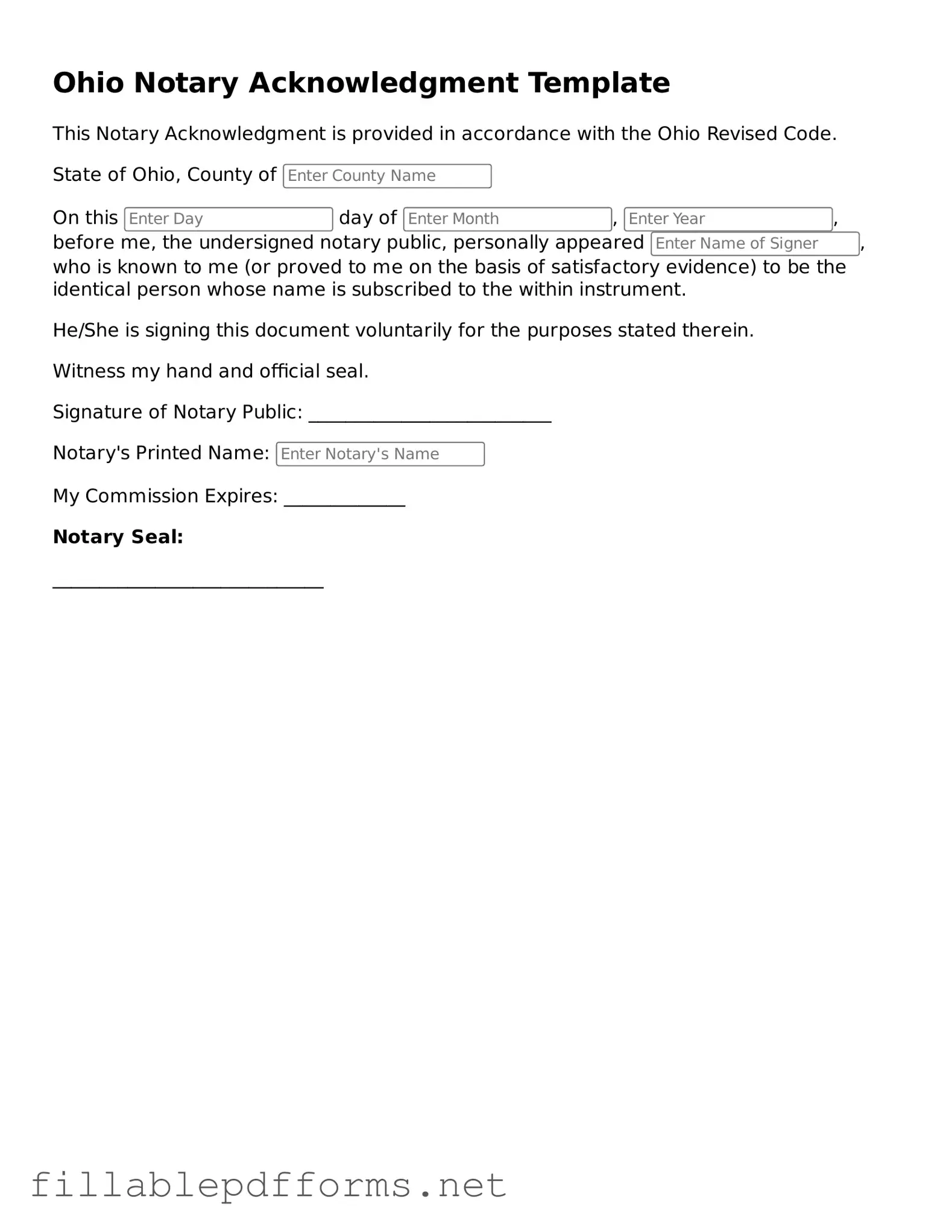The Ohio Notary Acknowledgement form plays a crucial role in the notarization process, serving as a vital tool for verifying the identity of signers and ensuring the authenticity of documents. This form is commonly used in various legal and financial transactions, including real estate deals, contracts, and powers of attorney. By providing a clear statement that the signer appeared before the notary and acknowledged their signature, the form helps establish the legitimacy of the document in question. It includes essential elements such as the notary's name, signature, and seal, along with the date of the acknowledgment. Furthermore, the form requires the notary to confirm that the signer is acting voluntarily and is competent to enter into the agreement. Understanding the nuances of the Ohio Notary Acknowledgement form is vital for individuals and businesses alike, as it fosters trust and transparency in legal dealings, ultimately protecting the rights and interests of all parties involved.
